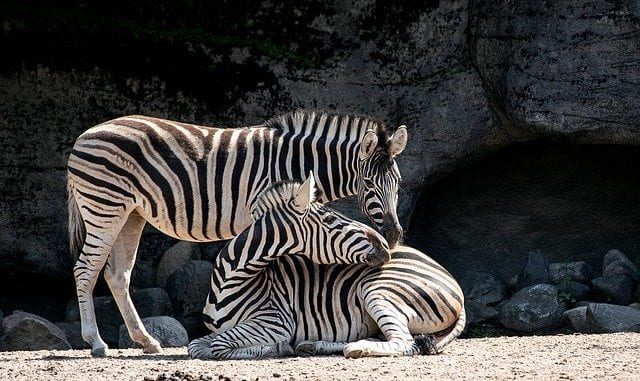
Zebras sport one of the most visually striking coats in the animal kingdom, with their iconic black and white striped patterns. But it turns out their flashy stripes aren’t just for looks – they serve an important function for the equines.
Research has shown that zebras’ stripes actually help deter parasitic flies from landing on them and biting. This is crucial, as biting fly species can spread diseases and negatively impact zebra health.
How do stripes ward off flies? It has to do with how the insects visually process stationary versus moving striped objects. Flies avoid landing on surfaces with striped patterns that are moving horizontally past them. This makes sense, as landing on a moving zebra is more challenging for a fly.
But strangely, flies are also fooled by stationary striped surfaces into thinking they are moving. Scientists believe the alternating contrasting stripes interfere with flies’ motion detection systems, appearing to vibrate or shimmer even when stationary. This makes stationary zebras unattractive targets for flies to approach and land on.
Experiments have demonstrated that flies had much lower rates of landing on striped horse models compared to plain brown horse models. Stripes clearly have a protective effect against fly bites.
“By putting black-and-white coats on horses, a new study shows that the pattern discourages biting flies from landing… several researchers, over the years, have shown that these flies find it hard to land on striped surfaces,” science writer Ed Yong wrote in the Atlantic.
So while zebras’ iconic striped coats certainly provide great camouflage against predators, the patterns also serve double duty repelling parasitic flies. This vital benefit helps zebras stay healthier in the African savanna. Nature has clever solutions!
The next time you see a zebra’s dazzling stripes, remember they aren’t just for beauty. Form matches function, as these patterns evolved to outsmart pesky flies too. Zebras’ stripes showcase how even the most decorative animal traits often serve underestimated purposes.

Leave a Reply